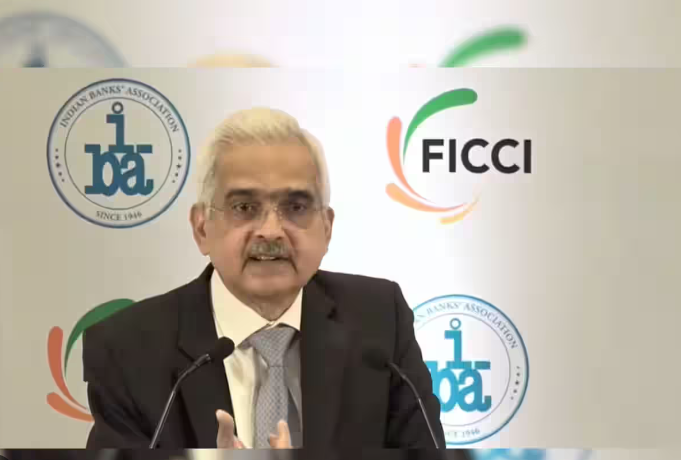Virendra Pandit
New Delhi: Warning that a ‘deadly mix’ of challenges could put policymakers to the test and that new risks keep emerging, Reserve Bank of India (CBI) Governor Shaktikanta Das on Wednesday cautioned the financial sector to avoid all kinds of exuberance.
Addressing an annual banking conference, organized by FICCI and the Indian Banks Association in Mumbai, he said geopolitical conflicts, geo-economic fragmentation, volatile commodity prices, uncertainty in the trajectory of monetary policies and their macro-financial implications, increasing frequency and ferocity of climate shocks present a deadly mix of challenges to test the policymakers.
“We are living in highly uncertain times in an interconnected world. New risks are emerging from time to time. New sources of risk are also coming up. In such a scenario, building up further on resilience would be the best insurance against shocks and uncertainties. This holds good for all businesses and financial entities,” according to the media reports, quoting him.
In this context, he said, the Indian economy has remained resilient and continued to grow because of its higher reliance on domestic demand which enabled the economy to weather multiple global headwinds.
“The continued thrust on capex by the government is also favorable for investment activity. It is now for corporates and other businesses to evaluate the current situation and future potential of India and move forward,” Das said.
The financial sector is doing well but it must avoid “all forms of exuberance” as credit growth accelerates, Das said.
“At the current juncture there may not be any immediate cause for worry but to remain on top of things, banks and NBFCs would be well advised to take certain precautionary measures,” he said, referring to non-banking financial companies.
He listed four areas where the financial sector needs to be careful. “First, while credit growth is accelerating in the current period, banks and NBFCs may take due care to ensure that credit growth at the overall, sectoral and sub-sectoral levels remain sustainable and all forms of exuberance are avoided,” he said.
Banks must strengthen their asset liability management. “In certain cases, we have observed increased reliance on high-cost short-term bulk deposits while the tenure of the loans, both in retail and corporate loans, is getting elongated,” he said.
Secondly, the increasing interconnection between banks and non-banking finance companies raises contagion risk. Banks must constantly evaluate their exposure to NBFCs.
“NBFCs, on their part, should focus on broad-basing their funding sources and reducing over-dependence on bank funding.”
Thirdly, he asked microfinance institutions to refrain from charging usurious interest rates. “Though the interest rates are deregulated, certain NBFCs-MFIs appear to be enjoying relatively higher net interest margins. It is indeed for microfinance lenders to ensure that the flexibility provided to them in setting interest rates is used judiciously. They are expected to ensure that interest rates are transparent and not usurious.”
Lastly, about algorithm-based lending models, he said the fintech sector should test them periodically and watch out for risks.
“An important aspect that merits attention in this context is about model-based lending through analytics. Banks and NBFCs need to be careful in relying solely on pre-set algorithms as assumptions based on which the models are operated. These models should be robust and tested and re-tested periodically,” he said.

